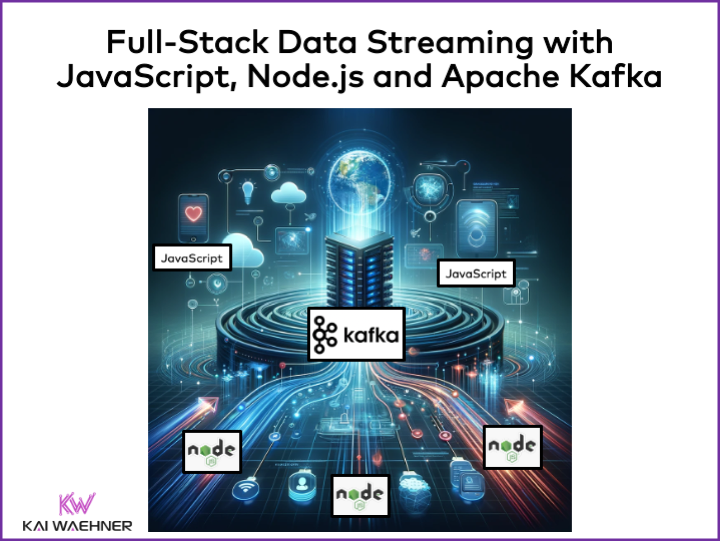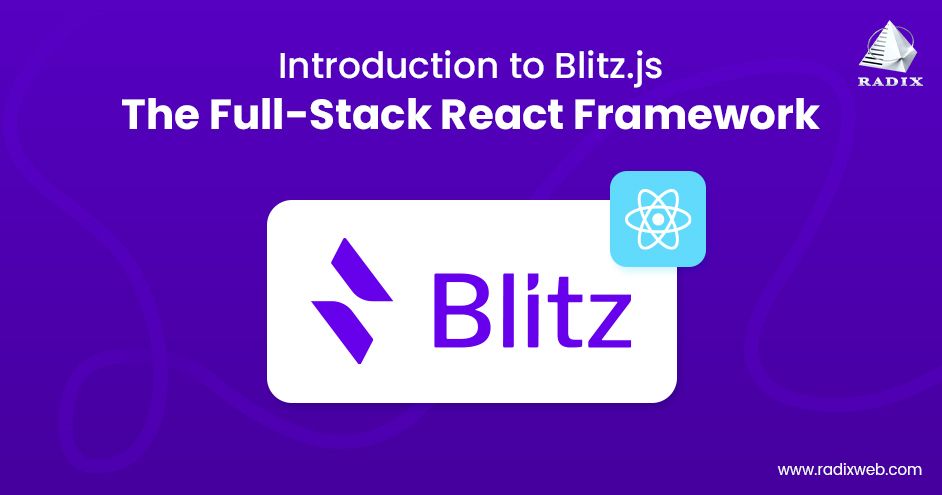The world of full-stack JavaScript development is in a constant state of flux, with frameworks evolving to meet the demands of increasingly complex applications. In this dynamic landscape, Blitz.js carved out a unique identity with its promise of a “Zero-API” data layer, aiming to make full-stack development as seamless as building a monolith. However, in a strategic pivot that reflects broader trends in the ecosystem, Blitz.js has evolved. It has shed its “magic” layer to become a more pragmatic and powerful full-stack toolkit built directly on top of Next.js.
This evolution is not a step back but a significant leap forward, aligning Blitz.js more closely with the robust foundations of Next.js while retaining its core value proposition: an unparalleled developer experience for building complete applications. This article delves into the modern Blitz.js, exploring its new philosophy as an opinionated Next.js superset. We will examine its core components, walk through practical implementations with code examples, discuss advanced patterns, and look ahead to what the future holds for this influential framework. For developers keeping an eye on React News and the ever-shifting meta of full-stack architecture, understanding the Blitz.js journey offers critical insights into building scalable, maintainable, and delightful web applications.
Understanding the Blitz.js Pivot: The Core Philosophy
To appreciate the current state and future of Blitz.js, it’s essential to understand its origins and the deliberate shift in its architecture. The framework’s evolution is a case study in adapting to the needs of the community and the underlying platform, in this case, Next.js.
What Was the “Zero-API” Layer?
Initially, the flagship feature of Blitz.js was its “Zero-API” data layer. This innovative approach allowed developers to write server-side code (queries and mutations) and import it directly into their React components as if it were a local function. Blitz handled the entire process of creating an HTTP endpoint, serializing data, and fetching it on the client, all behind the scenes. This abstracted away the need to manually build and manage a REST or GraphQL API, significantly speeding up development.
A typical “old” Blitz query invocation might have looked conceptually like this, showcasing the direct import of server logic into the client:
// This is a conceptual example of the old "Zero-API" pattern
import { useQuery } from "blitz";
import getProject from "app/projects/queries/getProject";
function ProjectDetails({ projectId }) {
const [project] = useQuery(getProject, { id: projectId });
return (
<div>
<h1>{project.name}</h1>
<p>{project.description}</p>
</div>
);
}While powerful, this “magic” introduced a layer of abstraction that could sometimes be difficult to debug and diverged from the standard Next.js data-fetching patterns. As Next.js itself became more powerful with features like Server Components, the Blitz.js team made the strategic decision to align more closely with the platform it was built upon.
The New Philosophy: An Opinionated Next.js Superset
The modern Blitz.js is best described as a “full-stack toolkit” or an opinionated layer on top of a standard Next.js application. The “Zero-API” data layer has been extracted and is no longer part of the core. Instead, Blitz focuses on providing a comprehensive, “batteries-included” setup that solves the common, tedious problems of full-stack development. The benefits of this approach are immense. It eliminates the “magic,” making data flow explicit and easier to reason about. It also ensures that a Blitz.js project is, at its heart, a Next.js project, allowing developers to seamlessly leverage the entire Next.js ecosystem and its documentation. This pragmatic shift is a recurring theme in recent Next.js News and Remix News, where developer experience is increasingly about sensible defaults and clear patterns rather than heavy abstraction.
Core Components of the Blitz.js Toolkit
The power of the modern Blitz.js lies in its collection of pre-configured tools and conventions:
- Authentication: Blitz provides robust, production-ready authentication recipes out of the box. Setting up email/password, session management, and OAuth providers is a matter of running a single command.
- Code Scaffolding: The
blitz generatecommand is a cornerstone of the developer experience. It can scaffold everything from database models and API routes to React components and forms, enforcing a consistent and scalable project structure. - Project Structure: Blitz advocates for a feature-based folder structure (e.g.,
app/projects/,app/auth/) that co-locates all related code—models, queries, mutations, and components—making features modular and easier to navigate. This approach shares philosophical similarities with frameworks discussed in RedwoodJS News. - Pre-configured Tooling: A new Blitz project comes with Prisma for database access, Zod for validation, and a full testing suite with Jest and React Testing Library, all configured to work together seamlessly.
Building with the Modern Blitz.js Toolkit

With the new philosophy, building a full-stack feature in Blitz.js is an explicit and structured process that leverages the best of the React ecosystem, particularly the powerful data-fetching capabilities of React Query.
Scaffolding a Feature with `blitz generate`
Let’s start by building a simple project management feature. The `blitz generate` command automates the creation of all the necessary files, from the database schema to the UI.
# This command scaffolds a complete feature
blitz generate all project name:string description:stringThis single command will:
- Add a `Project` model to your `schema.prisma` file.
- Create query files (e.g., `getProject.ts`, `getProjects.ts`) in `app/projects/queries/`.
- Create mutation files (e.g., `createProject.ts`, `updateProject.ts`) in `app/projects/mutations/`.
- Generate basic React components and pages for creating, reading, updating, and deleting projects.
The Anatomy of a Modern Blitz Query
A query in modern Blitz is a standard server-side function. It’s an API route that can be called from the client. Blitz uses a convention-based approach for file-based API routing. Here’s what a generated query to fetch all projects might look like. It uses Prisma for type-safe database access and Zod for input validation.
// File: app/projects/queries/getProjects.ts
import { resolver } from "@blitzjs/rpc";
import db from "db";
import { z } from "zod";
const GetProjectsInput = z.object({
// Define any input validation here, e.g., for pagination
skip: z.number().optional(),
take: z.number().optional(),
});
export default resolver.pipe(
resolver.zod(GetProjectsInput),
resolver.authorize(), // Ensures the user is logged in
async ({ skip = 0, take = 100 }) => {
const projects = await db.project.findMany({
skip,
take,
orderBy: { createdAt: "desc" },
});
const count = await db.project.count();
return {
projects,
count,
hasMore: skip + take < count,
};
}
);In this file, `resolver.authorize()` is a powerful middleware that ensures only authenticated users can access this data, throwing an error otherwise. This explicit, middleware-based approach to authorization is a major improvement in clarity.
Consuming Data with React Query
On the client-side, Blitz pre-configures React Query, the de-facto standard for server state management in React. To consume the query we just defined, you use the `useQuery` hook. Blitz provides a wrapper that makes this process seamless.
// File: app/projects/components/ProjectsList.tsx
import { useQuery } from "@blitzjs/rpc";
import getProjects from "app/projects/queries/getProjects";
import React from "react";
export const ProjectsList = () => {
const [result] = useQuery(getProjects, { take: 5 });
const { projects, hasMore } = result;
if (!projects) {
return <div>Loading...</div>;
}
return (
<ul>
{projects.map((project) => (
<li key={project.id}>{project.name}</li>
))}
</ul>
);
};This code is explicit and easy to follow. `useQuery` handles caching, re-fetching, and loading/error states automatically. This pattern is a great example of how Blitz leverages best-in-class tools, a trend highlighted in recent React Query News and discussions around data fetching libraries like Urql News and Apollo Client News.
Beyond the Basics: Advanced Patterns and the Future Roadmap
The Blitz.js toolkit scales elegantly to handle more complex scenarios, and its future roadmap is closely tied to the evolution of the broader React and Next.js ecosystems.
Handling Complex Mutations and Authorization
Mutations for creating, updating, or deleting data follow a similar pattern to queries. They are server-side functions that contain business logic, validation, and authorization checks. A crucial best practice is to include authorization logic in every mutation to ensure data integrity and security.

// File: app/projects/mutations/createProject.ts
import { resolver } from "@blitzjs/rpc";
import db from "db";
import { z } from "zod";
const CreateProjectInput = z.object({
name: z.string().min(3),
description: z.string().optional(),
});
export default resolver.pipe(
resolver.zod(CreateProjectInput),
resolver.authorize(), // Only authenticated users can create projects
async (input, ctx) => {
// `ctx.session.$getPrivateData()` can be used to get session data
const userId = ctx.session.userId;
const project = await db.project.create({
data: {
...input,
user: { connect: { id: userId } },
},
});
return project;
}
);On the client, you would use the `useMutation` hook from React Query, often in conjunction with a form library like React Hook Form or Formik, to handle form submissions, loading spinners, and success/error feedback. This tight integration with tools covered in React Hook Form News makes building complex user interfaces straightforward.
Integrating with the Broader React Ecosystem
Because modern Blitz.js is fundamentally a Next.js application, integrating other libraries is trivial.
- State Management: While React Query handles server state, client-side state can be managed with lightweight libraries like Zustand or Jotai, which are often favored over more verbose solutions discussed in Redux News.
- Testing: Blitz provides an excellent testing foundation with Jest and React Testing Library. For end-to-end testing, integrating tools like Cypress or Playwright is a standard practice, reflecting the latest trends in Cypress News and automated testing.
- UI and Styling: Tailwind CSS is a common choice, but component libraries like Tamagui or Material UI fit in perfectly. The principles even extend to mobile development, where a unified codebase might share logic with a React Native app built with tools like Expo, a hot topic in Expo News and React Native News.
The Road Ahead: What’s Next for Blitz.js?
The future of Blitz.js is about deepening its integration with Next.js and continuing to refine the developer experience. Key areas of focus likely include:
- React Server Components (RSCs): As Next.js continues to embrace RSCs, Blitz will likely provide conventions and generators to make building with this new paradigm even easier.
- Enhanced RPC Layer: While the “Zero-API” magic is gone, there is room to evolve the RPC (Remote Procedure Call) layer to be even more type-safe and performant, perhaps taking inspiration from libraries like tRPC.
- More Powerful Generators: The scaffolding tools could become more customizable, allowing teams to generate code that perfectly matches their specific conventions and UI libraries.
Best Practices for a Scalable Blitz.js Application
To ensure your Blitz.js application remains maintainable and performant as it grows, adhere to these best practices.
Structuring for Growth

Lean heavily on the feature-based directory structure that Blitz promotes. Co-locating all the code related to a single domain concept (e.g., `app/invoices/`) makes the codebase much easier to reason about than traditional layer-based structures (e.g., `controllers/`, `models/`, `views/`). Keep your queries and mutations focused on a single responsibility.
Robust Authentication and Authorization
Always use the `resolver.authorize()` or custom authorization logic in every sensitive query and mutation. Never trust data coming from the client. Define user roles and permissions clearly on the server and enforce them at the entry point of every data access function. This is non-negotiable for any production application.
Data Validation and Error Handling
Use Zod to validate all inputs to your queries and mutations. This prevents invalid data from reaching your database and business logic. On the server, throw specific errors (e.g., `NotFoundError` from `blitz`) to provide clear feedback to the client. On the client, use the `error` state from `useQuery` and `useMutation` to display user-friendly error messages.
Conclusion: Blitz.js as the Pragmatic Full-Stack Choice
Blitz.js has completed a remarkable evolution, transforming from a framework defined by its “Zero-API” magic into a mature, pragmatic toolkit for building full-stack Next.js applications. By embracing the underlying platform and focusing on a “batteries-included” developer experience, it solves the most common and frustrating aspects of web development: setup, authentication, data layer boilerplate, and project structure.
The key takeaways are clear: modern Blitz.js offers rapid development through powerful code generation, security by default with built-in auth recipes, and a scalable architecture by leveraging best-in-class tools like Prisma and React Query. For development teams who value both speed and structure, and want the full power of Next.js without the initial setup overhead, Blitz.js stands out as a compelling, forward-looking choice. It remains a key project to watch in the ongoing evolution of full-stack development and a vital part of the React News landscape.












